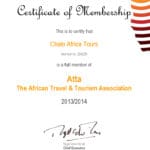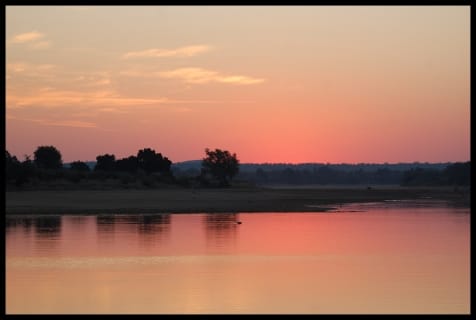
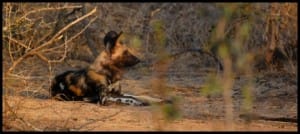 Sangeeta tells us about her trip to Zimbabwe in July 2014.
Sangeeta tells us about her trip to Zimbabwe in July 2014.
I had originally planned a Mana-Gonarezhou trip for July 2013 but a brand-new career and company intervened, forcing me to put this safari on the back burner. In retrospect, that was just as well because I think we were able to put together a much more interesting safari over time. Due to Doug’s unavailability for my preferred dates, I decided not to combine the northern and southern parks, and opted to take my chances on the Lowveld alone.
This meander took us from York House, a lovely guest house in Harare and a perfect overnighter after our long and arduous trek from DC, to Chishakwe Ranch in the Save Valley Conservancy. Then it was onto Singita Pamushana in the Malilangwe Game Reserve and finally to Gonarezhou Bushcamp with Ant Kaschula in GNP.
My takeaway is that the Zim Lowveld is a fantastic stand-alone destination, no less vibrant and no less exciting than the better known northern parks such as Hwange and Mana. I could easily have spent another week (or three) here. As for being remote and secluded – we were completely alone at Chishakwe, shared all of Malilangwe with 2 other vehicles but all our sightings were limited to just us, we briefly encountered 2-3 other vehicles in Gonarezhou – mainly self-drivers who went their way as we went on ours, but our sightings were alone. No shared sightings at all during the entire safari – a first for me, I must confess.
As some of you may know already, Chishakwe Ranch hosts Dr. Rosemary Groom and her Lowveld Predator Project.
For those who follow Rosemary’s blog posts etc., you will know that the Lowveld wild dogs constitute one of the last reasonably healthy populations of these magnificent animals in Africa. The project follows several packs within the SVC as well as several packs based inside Gonarezhou NP. Although the predator project also studies other endangered predators in the Lowveld, our focus was on dogs – specifically denning dogs. Many of the packs within the conservancy had denned in June – thereby making mid-July a pretty good time to catch the packs at the den sites.

The Save Valley Conservancy: This enormous tract of land was originally a cattle farming area, but as a result of multiple droughts and soil depletion from over-grazing, a consensus was reached some 22 years ago to return the land to wildlife ranching. The conservancy’s revenues are/were derived mainly from hunting but as I learned during this visit that they have always had a broader mandate to also protect endangered species like rhino. Subsequently, the conservancy has an excellent anti-poaching program, including well trained scouts and rangers etc.
Much as I am no fan of trophy hunting, I must concede (and the numbers show this) that the SVC’s game management plan over the years has been sound. The conservancy is now home to over 3000 eles from an original 300 that were translocated here from Gonarezhou when the conservancy was started. Rhino numbers are healthy, as are populations of lion and leopard. Cheetah have not done very well here – possibly because the lion population is quite high.
The Save Valley was once Africa’s largest privately owned and operated wildlife area, but with the recent political problems and re-settlements, the size of the conservancy has shrunk quite a lot. It was distressing to see small agricultural plots within the conservancy – and to hear about the large scale clearing of magnificent old mopane forests for subsistence farming. Anyhow, as a result of the ongoing political fracas, no hunting quotas have been issued for the past 2-3 years. This has left the properties scrambling for income and many of the ranches now offer basic photo safaris.
As a photo tour operator, I was very interested in seeing for myself the potential for photo tourism in the SVC . I was especially keen to see if photo tourism could co-exist with hunting – at least for the time it would take to potentially move entirely to photo tourism.
Chishakwe Camp is a small and comfortable camp located on the bank of the Msaize river. With its 5 simply furnished thatched chalets, it blends in beautifully into the countryside. The camp was hosted by Courtney, a learner guide who had spent his initial years on the hunting side of SVC. Courtney was ably supported in his role as host by a very capable staff of 4 and the adorable Boris, his Rhodesian Ridgeback mix puppy, who won all our hearts the minute we arrived in camp. Between Boris and the wild dogs pups, it was puppy paradise at Chishakwe! We chose to stay here because this is Rosemary’s base. However, there are other ranches like Sango etc that are more upscale and may suit others better.
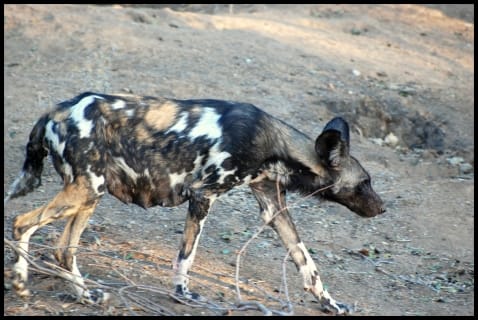
When we visited Mana in 2012, that was a safari specifically targeting wild dogs and we were really hoping that we would see pups too. Sadly, that was not meant to be. Although we managed to track two packs to their dens, neither of them felt comfortable showing their pups to us. Though very happy and satisfied with our magical dog encounters in Mana, puppy sightings have since remained high on my bucket list.
We were fortunate to spend several mornings and evenings (one den visit allowed per day – either morning or evening. We had 4 visits in all) at the Chishakwe den site, waiting for the pack to come back from their hunt to feed and socialize with the pups. We stayed for as long as it took for the pups to emerge from the den and until they were put to bed, so there were no time restrictions really, except to ensure that the dogs never felt uncomfortable or irritated by our presence. For this reason, we parked at the same spot each day so they could get used to us. They are quite habituated with the researchers and scouts so they quickly got accustomed to us as well. This pack had originally denned in a completely inaccessible area among some very rocky outcrops. But just a week and a half before we arrived, they (very kindly) moved to a beautiful, open site, rewarding us with fantastic sightings. The pack has 14 or 15 pups. We were restricted in being unable to access the rear of the den and so had to depend on the dogs coming towards us. Interestingly, Rosemary does not advocate approaching on foot. She believes that the dogs are much more comfortable and approachable if the humans are in a vehicle, so we did not get down from the car anywhere near the den site.
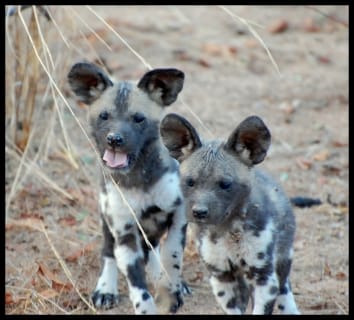
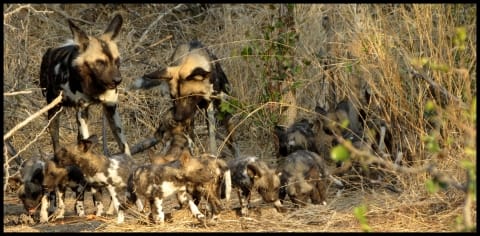
Other than the adorable puppies, we saw two remarkable instances of wild dog resilience and caring/consideration. I had read about the successful field amputation of Flame, a young dog of the Mapura pack) (Read the Feb 5, 2013 entry). What a wonderful surprise to be greeted on our very first visit to the den site by Flame himself – he was one of the two watchdogs guarding the den site that afternoon. He looked healthy, watchful and completely comfortable on 3 legs. It was lovely to see this young dog flourishing though I can’t find any photos of him at all.
On our second full day at Chishakwe, Rosemary and Jess, her research assistant, were kind enough to join us for dinner at camp for an evening of conservation, wild dog and general safari talk. I would strongly encourage anyone heading Zim-wards in the next month or so to make the time to stop by and take your chances with the denning dogs at SVC. We made a donation to the project and also paid $20 per person per visit to the den – a fraction of high season prices in other places that have relatively reliable dog sightings. The money all goes towards operational costs and every bit helps when the budget is stretched as tightly as it is. Please contact Rosemary/Jess if you can contribute with your time or your tourism to the project. I (as well as other tour operators, I am sure) would be more than glad to organize a photo safari for anyone who wants to visit the project and the SVC, with the proviso that there are no guarantees that the dog dens will always be at an accessible site.
That same evening, Rosemay & Jess asked if we had seen an injured dog that morning during our visit. We had not, but during their evening visit, one of the dogs had come back clearly mauled quite badly in what looked like a lion attack. She had deep bites and gouges all over her hindquarters and one of her legs looked broken. We saw Scarlet the next morning at the den – limping badly but still alive and being fed by one of the returning pack members. It is this type of cooperative and caring behaviour that makes these animals so endearing. I got an update from Rosemary a few days after we left saying that she was still hanging in there and that this was probably the best time to get injured since the pack was immobile. Fingers crossed that she makes it through. Each one of these dogs is precious and so important to the overall survival of the species.
It was very interesting to see how neatly the adults regurgitated for the adults and the puppies! I had always imagined that this would be a messy, heaving (and somewhat revolting to watch) affair but it was actually all quite neat and tidy 🙂 The pups were still nursing though by now, they had also started to show interest in solids, as evidenced by this little beggar below:
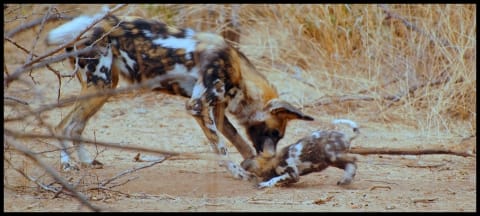
The rains were very good this year so the bush was thick and woody – making all non-dog sightings quite challenging. Add to this that the animals are understandably skittish in a hunting conservancy. Our dog sightings here were so spectacular that we really did not care about not seeing much else, but I do think that with some good planning (i.e. radio contact with the rhino scouts for example) and great guiding (where you can walk into the bush following fresh cat tracks, for example), even a skittish SVC can provide an excellent and adventurous photo safari. For now though, most of the animals seem to have gone nocturnal.
Way forward for the SVC: I have conflicting feelings about the best way forward for the SVC. Almost everyone I met in Zim (including Rosemary and Ant) seemed to believe that the hunting model works well and that the proof of the pudding is in the healthy wildlife numbers within the conservancy. I can understand and appreciate the practical nature of this discourse but something deep within me rebels against the commoditization of animals for sport. The SVC is not a marginal, tsetse infested area where no one but intrepid hunters will ever go. It is an immense and beautifully variegated tract of land that, with some time and patience, can make for a fantastic Big 5 photo destination.
Having said that, I saw first-hand how in the absence of hunting, the conservancy is suffering from a serious lack of funding. In its prime hunting days, each of these ranches had a fleet of well-maintained vehicles and large anti-poaching, fence maintenance, road maintenance and other units. With no hunting quotas, they have been forced to pare their operations to a minimum and bushmeat snaring/poaching are certainly more frequent now than they used to be – not the outcome any animal-lover wants to see.
So what is the best way forward? I honestly don’t know. I heard some talk about the SVC wanting to join the Peace Parks project. Other people want to continue with the hunting model. Still others (including some well known guides) want to start photo concessions within the conservancy. And over all of this looms the whole uncertaintly of resettlement and the dark shadow of political bigwigs who have lots of clout but no conservation knowledge or credentials whatsoever. Regardless of what happens, I do hope the powers-that-be realize that the SVC has played an invaluable role in conserving and protecting endangered species over the past two decades and fingers crossed that they are allowed to continue fulfilling this mission in the future.
Wildlife in the Save Valley:
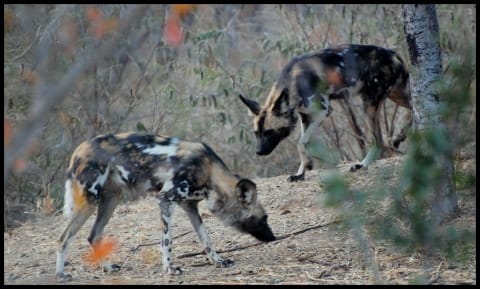
We reckon that we spent a total of close on 8 hours alone at the den site – when I think back on it, that is incredible! I would like to add a few words of heartfelt praise for Courtney, our guide. He let the dogs speak for themselves and did not insist on giving us a running commentary on the hunting, feeding and socializing habits of wild dogs while we were watching them, as so many guides may have been tempted to do. This ability to remain silent at the right times has become, for me, the indicator of a great guide. He answered our questions when we asked him – otherwise, he was quiet and simply enjoyed the dogs along with us. Our quiet time in the company of the dogs was magical. We could hear the leaves rustle, the twigs snap, the dogs twitter, the puppies scrabble – and I think the silence also allowed them to ignore us, thereby allowing us to observe them better. This is also one reason why we don’t have as many photos and videos as we now wish we had. It seemed like such a shame at the time to break the silence with the chattering of a camera.
There was, however, a videographer visiting at the same time as we were. I believe he is making a promotional video for the project. Perhaps Rosemary or Jess can post that video here when they receive it, so that you can see what this place looked like through a professional lens.
There was a trail cam positioned by the project at the den. So interesting that even though it was tied to a tree and away from them, the adults all seemed to recognize it as a foreign object! How on earth are they able to do that? Judging from all the mug shots that are regularly produced by trail cams, it appears that dogs are not the only ones that are curious about trail cams. I have seen photos of lions and leopards standing on their hind legs to check these cameras out as well…
Other than the dogs, we saw a honey badger. Lots of shy kudu (first time I heard a kudu vocalize – it sounded very like a ship’s horn!), impala, warthogs, giraffe, zebra, elephants, baboon and not a whole lot else. However, there were tracks of all kinds of animals everywhere we looked – evidence of lots of wildlife activity on the conservancy.
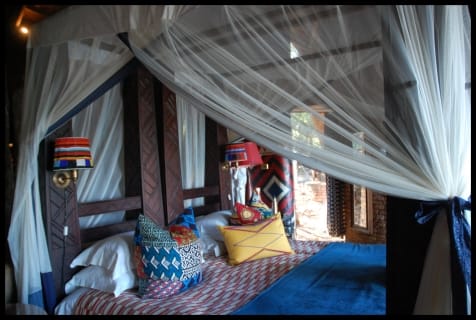
Singita Pamushana is located in the 100,000 hectare Malilangwe Game Reserve, the brainchild of Paul Tudor Jones, an American hedge fund billionaire whose idea it was to restore the ecological biodiversity of this part of the Lowveld. The Reserve itself is managed by the Malilangwe Trust – a non-profit org that is a major source of livelihood as well as a major source of aid for the local population. PTJ has been a real boon to conservation efforts in Africa – his other project is a huge tract of former hunting land adjacent to the Ikorongo GCA and the Serengeti NP that has, over the years, become a model for community-based wildlife conservation. Singita is the sole concessionaire on PTJ’s Tanzanian Grumeti Reserves as well.
This is obviously a completely different conservation model compared to the SVC, but in many ways, both projects share the same ultimate goal. The lodge itself is spectacular. You enter the main area through a dark stone entryway and are met with the blinding blue of the infinity pool merging into the dam below and the bright Shangaan colors used in the decorations throughout.
I must confess that I am not a fan of lodges as a rule but this was breathtakingly beautiful. Food & wine were superb, served at different locations each evening, and culminated with a bush dinner under a lantern-lit baobab tree and a bush loo whose pathway was lit with lanterns as well!
These are not the reasons I went to Pamushana, but they made a nice change for me nonetheless as I’d never stayed at any place remotely like this before this in Africa. But for all the trappings and luxe, it must be reiterated that their wildlife is seriously good and their conservation work is admirable. With this quality of wildlife, the boat rides, the walking, the cave paintings etc, Malilangwe is a good stand-alone destination and with its excellent roads and infrastructure (AC, wifi, US phone number), it is also an all-year destination, though obviously much less wild and more predictable than Gonarezhou next door.
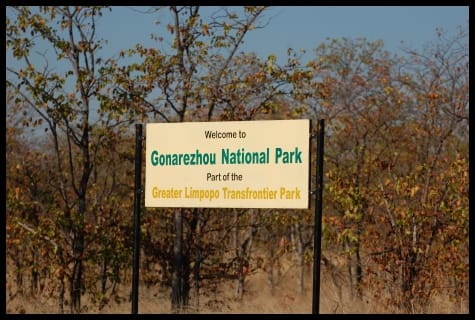
When we were planning this trip, I tried to put Pamushana as our last stop, reasoning that it would be nice to do the whole spa and luxury bit after some days and nights at a simple bush camp with rustic facilities. But the dates did not pan out and Gonarezhou Bushcamps ended up as our last stop anyway. Looking back at this sequence, I am so thankful that it all worked out the way it did.
We came to Gonarezhou after having already spent quality time with wild dog puppies at SVC, as well as super sightings of lion, cheetah, leopard, sable, buffalo and esp rhino at Pamushana. So there was no pressure whatsoever to see or do anything very specific in Gonarezhou and we were happy to have the days unfold as they would… As it turned out, the Gonerezhou National Park, Ant’s guiding, our collective lucky ‘karma’ and GBC’s superb team delivered to such an extent that we would have been hard-pressed to top the experience anywhere else, but we could not have known that in advance.
I would recommend that most people tack on Pamushana at the beginning of their trip so that they are not disappointed by the absence of cat sightings in GNP and so that they can really enjoy what the park has to offer – remoteness, seclusion and wildlife ‘encounters’. We heard lion calls almost every night and lots of tracks – but no sightings. We saw fresh leopard prints often but did not see any. Ant and Nina saw a cheetah fleetingly on a walk, but I did not. However, none of this mattered eventually.
We arrived into GBC at sunset and it did not take long for the cliffs to mesmerize…
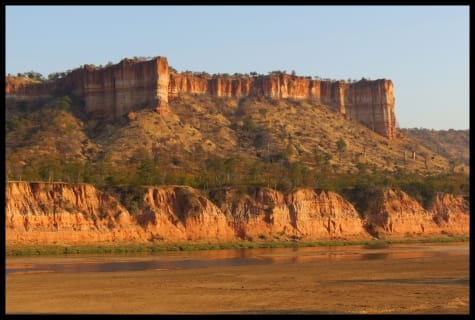
I will not repeat all the excellent info and background that WildDog has provided about the park and Ant’s camp set-up as a whole. Please do read their reports – along with their great stories, they have included the history of the park and its flora and fauna. I’d like to focus this report on the experiences and sightings we had. First of all, I was amazed by the sheer quantities of wildlife we saw in the park – especially as compared to the number of visitors that come here. I really can’t think of many places (other than really out of the way parks like Zakouma) that are so easily accessible (by car) and so sparsely visited. Big herds of impala, big herds of kudu, buffalo, good numbers of wildebeest, nyala, warthog, and of course, huge numbers of elephants wherever the eye can see. This was such a change from what I had read that I was genuinely astonished by the scale of the revival that the park has clearly undergone over the past 3-4 years.
The dry Runde river with its thin channels of water in the dry season attracts wildlife throughout the day and every single day we saw large groups of eles – both bulls and breeding herds, come down to the river to drink, bathe and play. They are a constant background presence here and such a beautiful addition to an already beautiful scene of the striated sandstone cliffs and the massive sand river bed below.
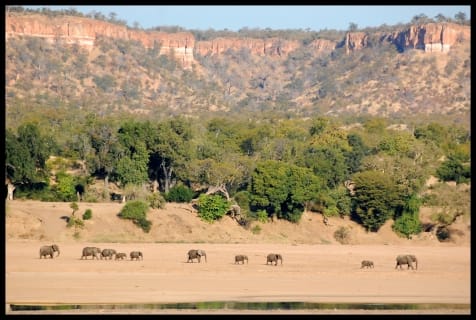
We were supposed to head out at 6:30 am the next morning, but just as we were getting dressed we heard Ant shout “Wild dogs on a kill, wild dogs on a kill…” Of course, we dropped everything and rushed half-dressed towards the mess tent. After clambering over some branches, we looked at where Ant was pointing and sure enough, far in the distance, some specks on the river bed. The bins revealed the tell-tale round ears rapidly consuming a kill a few hundred yards away from us.
Ant thought that they had crossed over from the far bank of the river towards our bank and he suggested that we should jump into the vehicle and see where the dogs would head next. We had counted 14 adults and so it was likely that they would need to hunt some more.
It was a cold and shivery morning and we were without our jackets or fleeces but everyone jumped into the car and off we raced, radio calls flying between us and the camp staff in case the dogs came into camp. We stopped now and then to listen for their calls. Scott, (Ant’s Sancho Panza and an all-over excellent sport and expert guide-in-the-making) had a hunch that the dogs were in the thickets to the left, so we parked the car and set off on foot.
There were dog tracks whichever way we looked, impala scattering in panic here and there and even this…
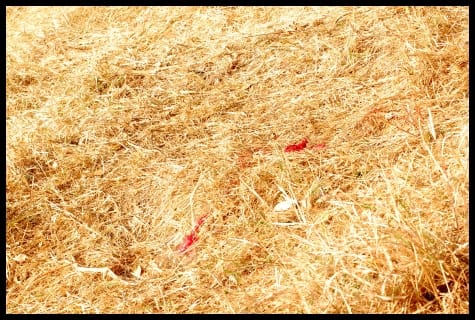
Finally, Ant picked one set of tracks and we set off stealthily towards the river, getting closer and closer to the embankment until Ant motioned silently for us to stop and listen. We could clearly hear crunching noises coming up towards us from the bottom of the embankment. As quietly as we could, we tiptoed one after the other down a steep hippo trail and peered over – and yesss, there though the leaves, we could see 3 dogs. They were not more than 6-10 feet directly below us, eating the last of their second or third kill – they had made this kill in the time that had elapsed since we saw them in the river bed. After some minutes of crunching and munching (still not having heard or spotted us), they walked over and lapped up some water, and then three sets of limbs went splash, splash, splash through the water and just like that they were gone. They had left behind an impala carcass still warm to the touch and steaming in the cold morning air.
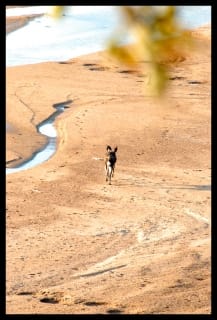
Sadly not many photos of this encounter as it happened. But I am writing this as I lived it in the hope that when I read it later, I can still capture that sense of delight we experienced. What a first morning and not even 9 am yet! I had unpacked my carved dogs the evening before to show to them to Ant and Scott and we had decided to leave them on the dining table as our lucky mascots. They certainly proved to be that 🙂
Although Gonarezhou has a very good dog population, they usually den in inaccessible areas and while we were hoping to strike it lucky, we also knew that without any telemetry equipment and without Rosemary telling us of their whereabouts, chances of encountering them here were slim. So this was a real piece of luck and we came back to camp thrilled and satisfied by what we had already seen. But the day was not over yet…
After grabbing a cup of coffee, Ant suggested that we have breakfast at one of the inland pans by 10:30 or so in the hope of catching up with the eles who often visit these pans in the late morning at this time of the year rather than go all the way down to the river for a drink. The pan itself is located off the main track – one of the last sizeable inland pans that still had some water. We saw many cracked and crusty dry pans en route.
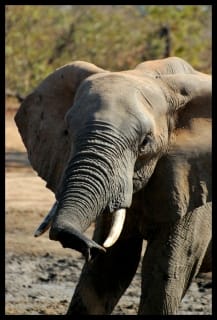
The steady stream of wildlife was not restricted to eles alone. We saw warthogs make an appearance. And kudu. A zebra family. As well as two magnificent nyala bulls.
All manner of birds, including a fish eagle that was skillful enough to catch its catfish from the rapidly dwindling pool of water below. The elephants were bullies, though, and all the other animals came, waited and then left because they did not dare approach the pan while the eles were there. After the adrenalin-filled dog encounter, this felt like such a restful and serene rest-of-the-morning where we seemingly had the pan, the park and this incredible wildlife parade all to ourselves.
That evening, Ant invited us to come along on what he billed as nice, restful walk in the bush. Within minutes, Nina and he saw a cheetah, for goodness sakes! Making its way into the thicker brush 😮 The alluvial floodplains of the Runde river reminded me a bit of Mana – here also the same sausage trees, leadwood, giant figs and cathedral mopane that you see along the Zambezi – but many, many more baobabs than in the north.
What a first day at Gonarezhou National Park, and what a view to close out the day…

Saying Hello to two Giants and the Great Lungfish Expedition
I’ve already used up my quota of words for the day, so I will let these videos do the talking… Suffice it to say that the next hour ranks up there with my best safari moments to date.
The quiet pan, a gentle breeze rustling, the huge old bull contentedly scratching himself against the tree, Ant speaking gently to him and the eles soft rumbles rippling through my chest as I stood on the seat and soaked in the memories as they were being made 🙂 Please excuse the shaky videos and crazy zooms. I have now been very sternly informed by my daughter that next time she’ll take a tripod and disable my zoom mechanism altogether! But I am sort of hooked to the whole video thing now.
Ant was hoping against hope that he would see a lungfish in the drying pan today. He had wanted to check out the pan yesterday for lungfish but there were too many eles around. Today it was mostly quiet and so off he went bravely into the murky pool, determined to catch a lungfish ot two! True confessions: I videoed this expedition thinking what a funny story this could become if he slipped just once 😛 But after much panning and grabbing hold of catfish instead of lungfish, the intrepid explorer decided he needed to come back with Scott and a net in tow! Which he did, but no luck later either.
We then packed up but en route back, Ant saw the biggest old bull he knows in the park. Scott had told me about their fantastic encounter with this same ele so we were both excited to see him happily browsing on the trees. He had not been seen for a month so Ant thought we should go up to him and say hello… He is the one with the big tusks on the last section of the ele video clips above.
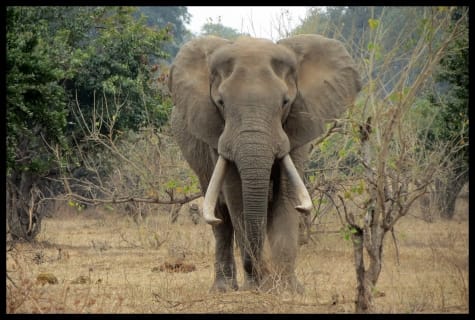
We walked with him and alongside him for a while. I love the way that Ant approaches these animals – he let the old bull know we were there and then positioned us behind a log where we waited. It was now the bull’s choice to either approach us or walk away from us – we would not importune him in any way. It was our great privilege (and another abiding memory) that he came straight towards us and was so comfortable that he did not even break his stride – gently walking along a few feet from us to the next grove of trees where we left him to his own devices.
Where have the ‘belligerent’ Gonarezhou elephants gone, I wonder? Time and again, we interacted with eles, each time letting them chose the terms of the interaction. And time and again, they chose to stay with us. We did happen across a self-driver one morning who was speeding down the track. When we stopped, he told us that they had been chased by a ‘belligerent’ bull not far away so we should be careful. But when we got there, all we found was an agitated youngster who had probably been scared out of his mind when a car had almost hurtled into him. Ant spoke gently to that youngster too and he calmed down immediately. With the horrible history this park has had with poaching and culling and hunting, I was amazed at the relationships he has built with some of the older bulls who surely have a memory of the bad days. But animals are more forgiving than humans, I think. Even with their wildness and their history, they recognize Ant’s voice and smell as belonging to a safe person. I honestly think we have us another Elephant Whisperer in the making…

